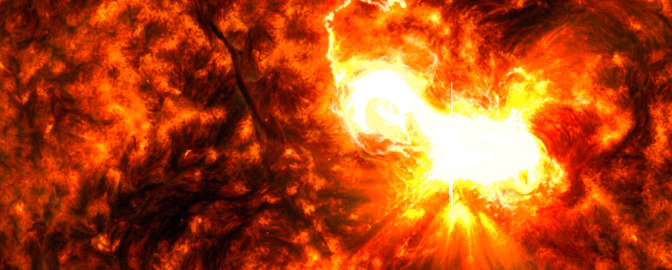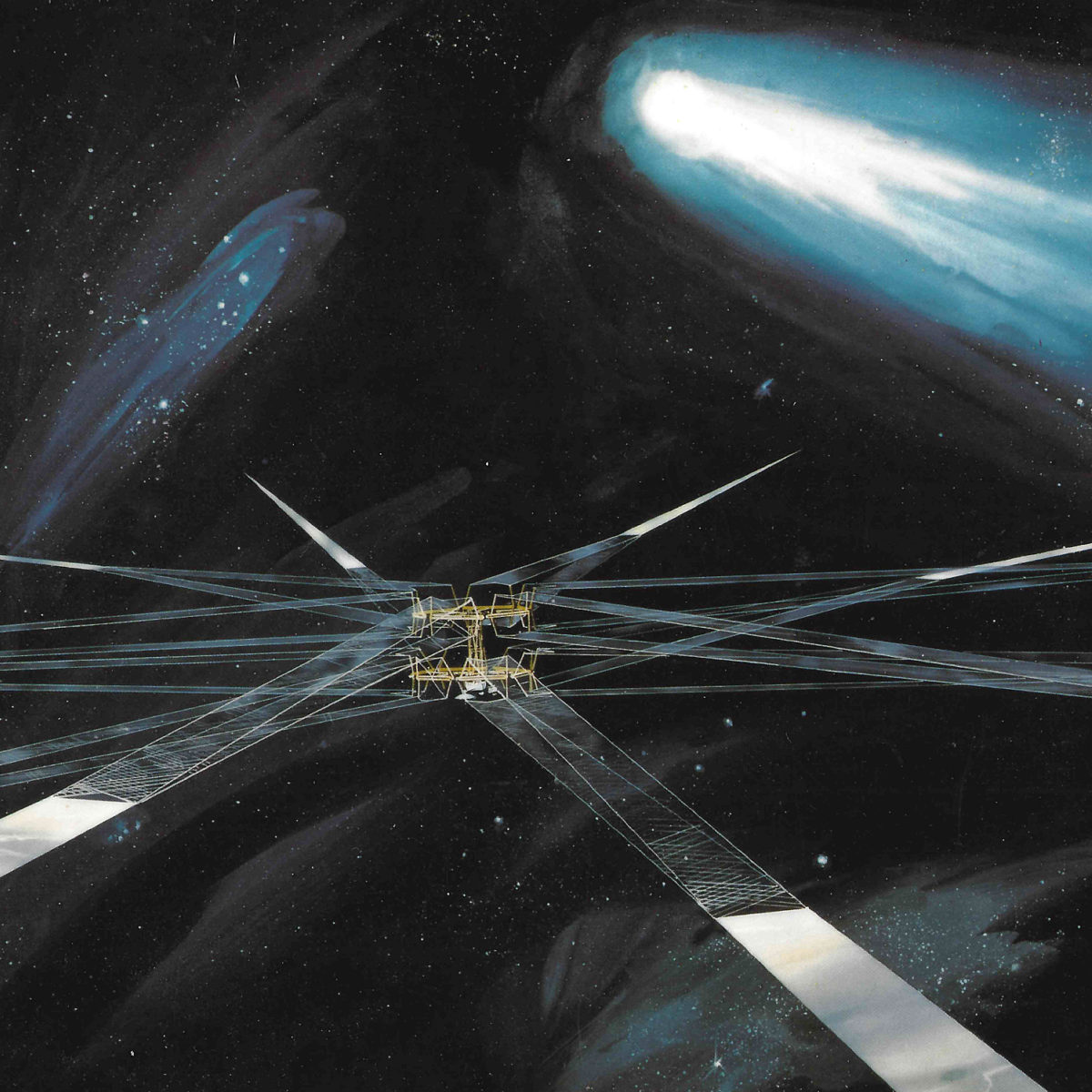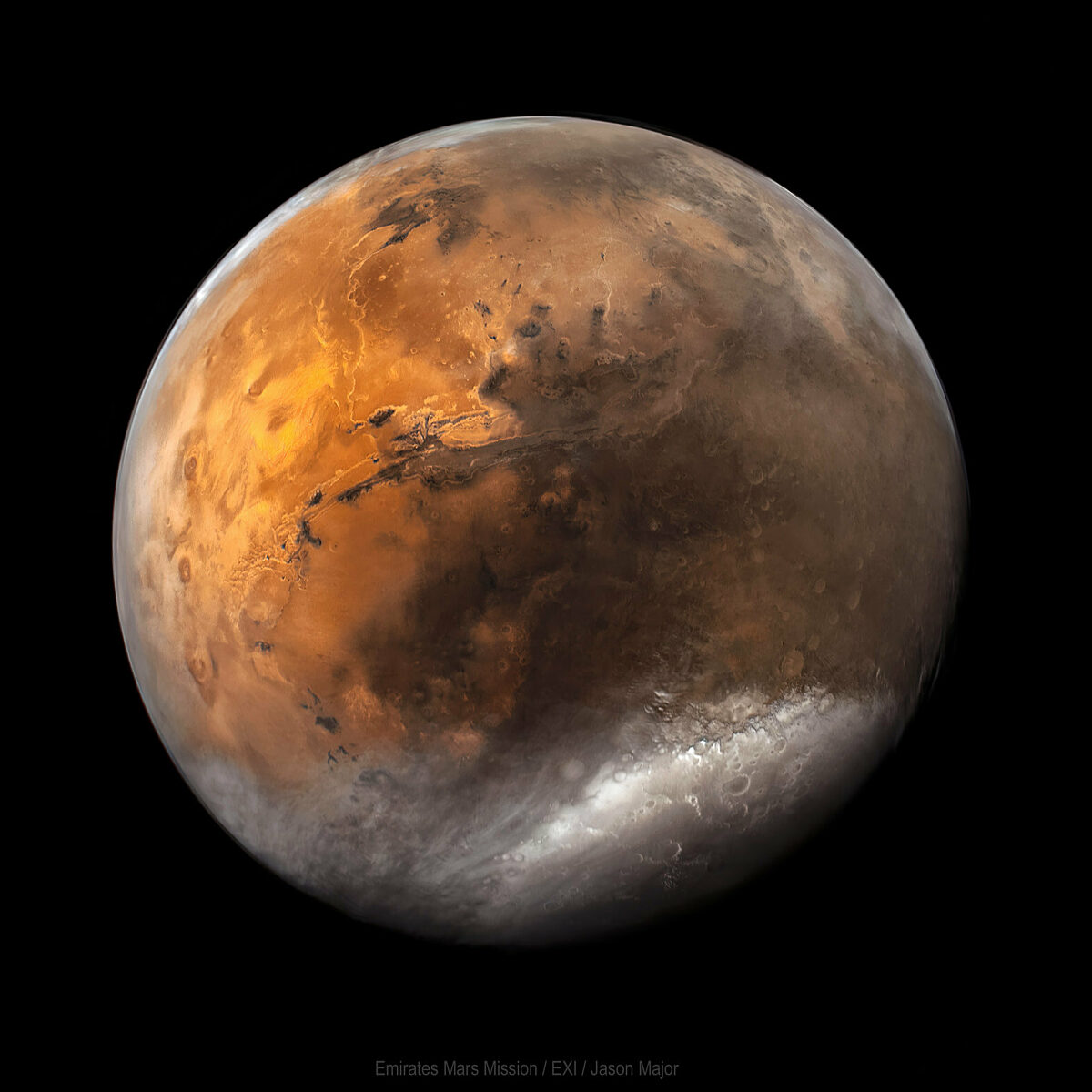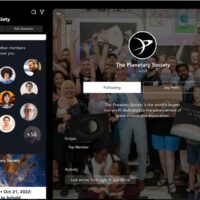Space for Everyone: Impact Report
Five years ago, The Planetary Society made a commitment to our members, to ourselves, and to the passion for exploration we all share. We built a new plan for the future, called Space for Everyone, to define our priorities and the frontiers of our work in a way never done before. After laying out our mission — “empower the world’s citizens to advance space science and exploration” — we drilled down on three core enterprises to focus our efforts around:
Explore Worlds: Increase discoveries about the worlds of our solar system and beyond.
Find Life: Elevate the search for life as a space exploration priority.
Defend Earth: Decrease the risk of Earth being hit by an asteroid or comet.
These goals aren’t new — we have always been committed to them, ever since Carl Sagan co-founded The Planetary Society 45 years ago. But by explicitly naming these enterprises and elevating them as priorities, we gave ourselves the tools to become bolder space advocates, to advance science more efficiently, and to reach broader audiences for our grassroots work. The Space for Everyone framework has brought our members together in new ways, and it’s helped us become a stronger organization.
There is no better proof of this than the impact The Planetary Society has made over the past five years.
Skip ahead to: Science & Technology | Advocacy | Education & Outreach | Organizational Excellence
SCIENCE & TECHNOLOGY
LightSail 2 completes mission, cements legacy
In 2019, The Planetary Society’s very own space mission, LightSail 2, successfully demonstrated that solar sailing was possible for a cubesat in low-Earth orbit. It was a huge milestone for spaceflight, and the spacecraft was recognized with awards from both TIME magazine and Popular Science.
After this success, The Planetary Society continued to operate LightSail 2 for two more years. We took data that furthered our understanding of solar sailing, and we published scientific papers that have already been cited by dozens of researchers. Since LightSail 2’s launch, our chief scientist, Bruce Betts, has also consulted with multiple NASA teams working on their own solar sail missions. Two such spacecraft have now launched, further cementing LightSail’s legacy in advancing space exploration.
The Story of LightSail, Part 1
The first installment of our three-part LightSail history series looks back at the origins of solar sailing and a NASA project to send a giant solar sail to Halley's Comet.
Sailing the Light Sailing the Light tells the story of the LightSail mission, a crowdfunded space science project from The Planetary Society.Video: The Planetary Society
PlanetVac operates on the Moon, books ticket for Mars
PlanetVac — a space technology supported throughout its development by The Planetary Society — has now landed and operated on the Moon. As part of NASA’s Commercial Lunar Payload Services (CLPS) program, Firefly Aerospace’s Blue Ghost spacecraft delivered PlanetVac, along with several other instruments, to Mare Crisium on March 2, 2025.
The Planetary Society started supporting PlanetVac in 2013, years before the CLPS program even existed. Back then, PlanetVac was a mostly-untested prototype. But we believed in PlanetVac’s promise: to make it cheaper and easier to collect samples on other worlds with the help of a vacuum cleaner-like method.
On two separate occasions, our members helped fund crucial tests that advanced PlanetVac through development. It has now deployed on the Moon with flying colors, and is slated to fly to Phobos, a moon of Mars, in 2026.
PlanetVac operates on the Moon Honeybee Robotic's Lunar PlanetVac instrument successfully collects a sample of regolith from the Moon's surface. Lunar PlanetVac touched down as part of Firefly Aerospace's Blue Ghost Mission 1 on March 2, 2025.Video: Firefly Aerospace
STEP Grants advance space science
The Planetary Society has always looked for important science projects that we could help get off the ground. With the definition of our Space for Everyone framework, we have now formalized and streamlined this process into an open, competitive call for proposals that support our core enterprises. The result: our Science and Technology Empowering the Public (STEP) Grants.
We have awarded nearly $200,000 to four different projects:
Demystifying near-Earth asteroids
The Planetary Society is supporting researchers at the University of Belgrade, Serbia, as they work to determine what near-Earth asteroids are made of without leaving our planet.
Studying salty Earth lakes to learn about other worlds
The Planetary Society is funding a study of salty lakes that may be similar to ancient Mars and some of the Solar System's ocean moons.
Growing veggies for the Moon and Mars
If we're going to live on the Moon and Mars for extended periods, we'll have to grow crops in space.
Are we alone in the Universe? SETI project
Citizen scientists will train computer algorithms that will be used to search for life beyond Earth.
Shoemaker awardees look to the skies
Over the past five years, we have lent increasing support to our global network of amateur astronomers dedicated to finding, tracking, and studying potentially dangerous asteroids. These Shoemaker Near-Earth Object (NEO) Grant awardees protect the world from a very real threat. If our planet were hit by just one asteroid — say, one as big as a 50-story building — the explosion could be as powerful as several nuclear bombs.
One of our recent grant winners, Leonardo Amaral, used his grant-upgraded telescope to discover an asteroid much larger than this. Measuring over a kilometer-wide, asteroid 2020 QU6 is big enough to cause global devastation, and perhaps the collapse of civilization, if it ever hit Earth. Fortunately, Amaral’s discovery is not on a collision course with our planet any time in the foreseeable future.
The last five years has seen nearly $150,000 given to observers like Amaral, including our largest-ever set of grants in 2021.
Shoemaker NEO Grant Winners Advance Their Work
We check in our last round of grant winners, who are helping to defend Earth from dangerous asteroids.
Fostering dialogue around the Search for Life
In 2024, we brought together world-class experts in astrobiology, planetary science, and the search for extraterrestrial intelligence in a symposium at our headquarters. Over two days, we facilitated scientific dialogues that led to new, productive collaborations. At the same time, we gained fresh insight into how The Planetary Society can best support the search for life from now on.

ADVOCACY
The Day of Action, Six Years Strong
The Planetary Society’s annual Day of Action is a perfect symbol of what we’re all about: we give everyday people the tools and opportunities to raise their voice for the scientific exploration of the Cosmos. Every year for the past six years, we have gathered more than 100 members from across the United States and stood beside them as they brought their passion directly to the offices of Congress. Our members have now held nearly a thousand meetings with politicians, and the Day of Action has become, by far, the largest single day of non-industry space lobbying in the world.
2020 Day of Action The Planetary Society's annual Day of Action brought 115 space advocates from 28 states to Washington, D.C. on 10 February 2020.
Helping save VERITAS
When NASA’s VERITAS mission to Venus was on the chopping block in 2023, The Planetary Society successfully organized a campaign to save it. We literally stood with the mission’s principal investigator, Darby Dyar, and fought beside her in Washington. Now, that mission is on track to launch.
“If The Planetary Society hadn't come to our aid, I have a feeling that we wouldn't be in the place we are right now,” Dyar told us. “I can't express well enough how grateful the mission is.”
In 2022, a similarly responsive advocacy effort helped push Congress to restore tens of millions of dollars to the asteroid-hunting NEO Surveyor mission, which was slated to suffer a 75% budget cut. That mission is now on track to launch in 2027.
Victory for Europa Clipper
After over a decade of tireless advocacy, the Europa Clipper mission has finally launched. The spacecraft — which stands as a titan achievement for science and for all of humanity — is now on its way to better understand whether Jupiter’s moon Europa might be hospitable for life.
Back in 2013, The Planetary Society fully committed to making a Europa mission one of our most important advocacy priorities. We fought hard for Europa Clipper, writing articles and op-eds, testifying before Congress, holding events on Capitol Hill, and sending hundreds of thousands of messages to the government in support of the mission. Thanks to The Planetary Society, its members, and those in Congress who understood the mission’s importance, Europa Clipper went from idea to reality. On October 14, 2024, the spacecraft began its journey toward the Jupiter system.
Europa Clipper: A mission backed by advocates
Europa Clipper will soon head for Jupiter's icy, potentially habitable moon. Without the advocacy efforts of The Planetary Society and our members, the mission may never have been possible.
EDUCATION & OUTREACH
Planetary Academy inspires a new generation
If you ask Bill Nye, he’ll often say that the best way to get people interested in science is to engage them from a young age. That was part of the logic behind his iconic TV show, and it’s one of the reasons The Planetary Society launched Planetary Academy in 2022. With hands-on activities approved by Bill Nye himself, Planetary Academy is designed to show kids the wonders of the Cosmos and empower them to explore.
So far, Planetary Academy is off to a strong start. Our Kickstarter campaign, thanks to overwhelming support from members and our backers, raised over $115,000 to help launch the program. Since then, thousands of families have signed up.
Does your kid love space? Young explorers ages 5-9 now have their very own membership experience with The Planetary Society when they join The Planetary Academy!
New courses offer deep dives
Our new courses, hosted within the digital community, give members the opportunity to learn more about the aspects of space science and exploration they care about most. Each course is built around a different part of our mission and features relevant experts. Members can get an in-depth rundown on the search for life from NASA scientists, for example, or hear from our chief of space policy about how they can hone their advocacy skills. That’s in addition to guides on asteroid defense, eclipses, and stargazing.
Intro to Solar and Lunar Eclipses A preview of the content of our members-only online course about solar and lunar eclipses.Video: Blake Estes
Book series hits shelves nationwide
Thanks to a new partnership with Lerner Publishing Group, The Planetary Society is now engaging kids around the world through books on space science and exploration. Each title is written by Bruce Betts, PhD, our chief scientist, and is designed to share the passion, beauty, and joy of space discoveries with a wide audience.
We have released 13 books: 12 as part of the Exploring Our Solar System set, and one all about eclipses, called Casting Shadows. Already, these titles have been checked out of libraries by hundreds of thousands of students. There are now plans to build off this success and write another set of books in the near future.
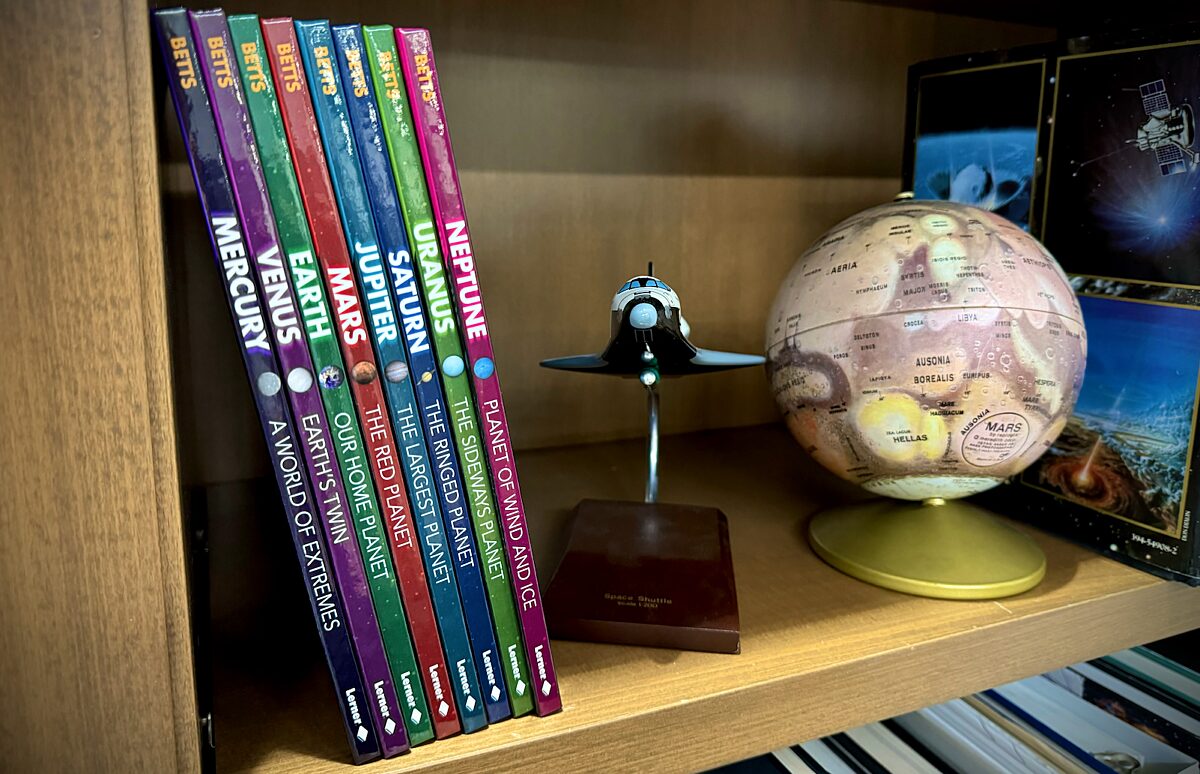
Our audience grows to new heights
At The Planetary Society, we believe the wonders of the Universe and the awe of cosmic discovery are meant to be shared. That’s why the past five years saw the launch of the Downlink newsletter, a redesigned look for The Planetary Report, and a new strategy for our social media channels. Just recently, we began the development of a new children's TV show all about space exploration.
These efforts have paid off. Between the articles on this website, our videos on social media, and our Planetary Radio podcast, The Planetary Society has been watched, read, or listened to over 30 million times in the last year alone. Our social media channels have been nominated for two Webby awards in recognition of excellence in science and education, and Planetary Radio has now been downloaded from every single country on Earth.
Investing just slightly more resources into social media videos has yielded major benefits. Over the past five years, The Planetary Society has ramped up its presence on Instagram, YouTube, and TikTok to garner nearly one million subscribers across all three channels. Our YouTube, which is nearly 20 years old, has seen almost half of all subscribers and video views come in the last two years alone. In just the 2024 fiscal year, we earned over 6 million views on TikTok and nearly 20 million views on Instagram.
A new look for The Planetary Report
How an iconic magazine gets a makeover.
ORGANIZATIONAL EXCELLENCE
Connecting members through Digital Community
Since establishing our digital community in 2023, over 16,000 members have joined us online. In the past year alone, people from all around the world have made nearly 200,000 posts, comments, and other contributions. Our monthly book club has given members the opportunity to ask questions of dozens of authors, from astronauts like Nicole Stott to sci-fi giants like Andy Weir. Members have played trivia and won cool prizes, shared beautiful photos and paintings of the night sky, nerded out over the latest space missions, and organized their own outreach events. Most of all, they have made our site into a community in the truest sense of the word, bonding over their shared love of space.
Welcome to your member community!
The Planetary Society has a new virtual space for members to connect and work together to advance space science and exploration.
February 2025 Book Club: Astronaut Nicole Stott on the Novel ORBITAL Orbital is the beautiful novel about 24 hours in the lives of six astronauts on board the International Space Station. Beautiful, yes, but is it accurate? Nicole Stott lived on the ISS. She says YES, almost without exception. Host Mat Kaplan also talks with Nicole about her own book, Back to Earth, a terrific, non-fiction complement to Samantha Harvey's fictional tale. Their conversation covers much more, including Nicole's creation of art in space.
Fundraising fuels our mission
In 2021, we launched the public phase of our Beyond the Horizon campaign with the ambitious goal of raising $40 million over five years. Members kicked us off in Planetfest ’21, joining CEO Bill Nye for our first-ever virtual fundraising gala to raise nearly $30,000 in less than an hour. Thanks to all our members and lead donor Taner Halicioglu, Beyond the Horizon has now successfully reached its goal of providing $40 million to fuel our mission — an unprecedented amount, without which none of the accomplishments of the past five years would have been possible.
The Planetary Society is now raising funds at almost three times the rate we were a decade ago, and we have continued to explore crowdfunding models with Kickstarter, Omaze, Prizeo, and Colossal. These efforts are raising millions of dollars to support our mission and programs.
None of this would have been possible without the vision of Wally Hooser, a longtime board member of The Planetary Society who challenged us to build a more confident, fiscally sustainable organization. Following his passing in 2021, we established the C. Wallace Hooser Award for visionary philanthropy in Wally’s honor. The award has now been given to two people, Mark Gelfand and Taner Halicioglu, who exemplify exactly the sort of philanthropic leadership Wally stood for.
Technology upgrades keep us moving
In 2024, we migrated our data systems from Blackbaud CRM products to a new Salesforce platform. Though it may sound technical, this was a massive project that substantially improved the basic foundation of The Planetary Society’s operations. The sweeping upgrade will open up new opportunities for growth by changing how we manage our membership, fundraising, and marketing programs.
Bringing The Planetary Society together
Over 800 members joined us in watching a once-in-a-lifetime total solar eclipse at our Eclipse-O-Rama event in Fredericksburg, Texas. The two-day festival featured stargazing, talks by professional astronomers, a meet and greet with Bill Nye, and plenty of games and food. Everyone had a blast making memories together, as a space community.
In 2021, we organized a two-day virtual festival to celebrate the arrival of three different spacecraft to the planet Mars. People from around the world joined Planetfest ‘21, including JPL chief engineer Rob Manning, author Andy Weir, astronaut Jessica Watkins, and Star Trek actor Kate Mulgrew.
Finally, in 2025, we celebrated our 45-year anniversary with the Cosmic Shores Gala aboard the iconic Queen Mary. Tickets were sold out, and everyone from NASA leaders and Star Trek actors to charter members were there.
The Planetary Society took the opportunity to look back on our rich history of accomplishments, bringing our community together around the collective passion for exploration we all share. We celebrated our advocacy campaigns, our far-reaching audience, our successful space missions, and our impressive campaign to raise $40 million in five years.
We also looked to the future. Many at the gala spoke about the crisis now facing space science and exploration, drawing a parallel between the political environment in which the Society was founded and that prevailing in 2025. But not everything has remained the same. While our grassroots movement is fueled by the same collective passion, we are more capable than ever before — and that is thanks, in part, to the Space for Everyone framework.


 Explore Worlds
Explore Worlds Find Life
Find Life Defend Earth
Defend Earth